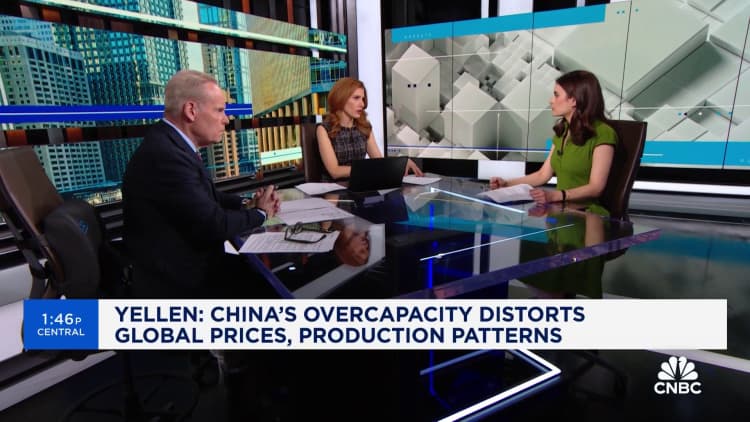Modern Shanghai city landscape juxtaposed against China’s national flag
Yaorusheng | Moment | Getty Images
China’s factory activity in March expanded by its strongest pace in more than a year, a private survey showed on Monday, in signs of stabilizing growth in the world’s second-largest economy.
The Caixin/S&P Global China manufacturing purchasing managers’ index was 51.1 in March — its strongest since February 2023 — after coming in at 50.9 in February. Economists had expected the reading to hit 51, according to a Reuters poll. The 50-point mark separates expansion from contraction.
This reading corroborates another official survey of manufacturing activity that surpassed market expectations and came at its strongest in 11 months. The official survey for non-manufacturing activity in China recorded its most robust reading since June, adding to encouraging recent export and retail sales data.
“Overall, the manufacturing sector continued to improve in March, with expansion in supply and demand accelerating, and overseas demand picking up,” Wang Zhe, a senior economist at Caixin Insight Group, said in the survey release.
China’s National Bureau of Statistics released survey data on Sunday that showed the country’s official manufacturing PMI coming in at 50.8 in March, its strongest reading since March last year that was also stronger than expectations for 49.9 in a Reuters poll.
These surveys are typically the first economic data points available each month and provide insights on the state of the Chinese economy.
China has set a growth target of “around 5%” for 2024, while setting a deficit-to-GDP ratio of 3% for the year and reiterating a plan to double down on “high-quality growth” and manufacturing.
Given the high base of 2023 data, several economists have cautioned Beijing may have to resort to more robust stimulus to achieve its 2024 growth goals.
Some lingering concerns
The latest data point to some lingering concerns, particularly about prices.
China’s producer prices have dipped for well more than a year now, while consumer prices have declined in four of the last five months.

“Manufacturers increased purchases and raw material inventories amid continued improvement in business optimism. However, employment remained in contraction and a depressed price level worsened,” Caixin’s Wang said.
“Prices remained low. A drop in raw material prices reduced production costs for manufacturers, providing leeway for them to lower prices amid fierce market competition. Both gauges for input costs and output prices reached new lows since July 2023,” Wang added.

